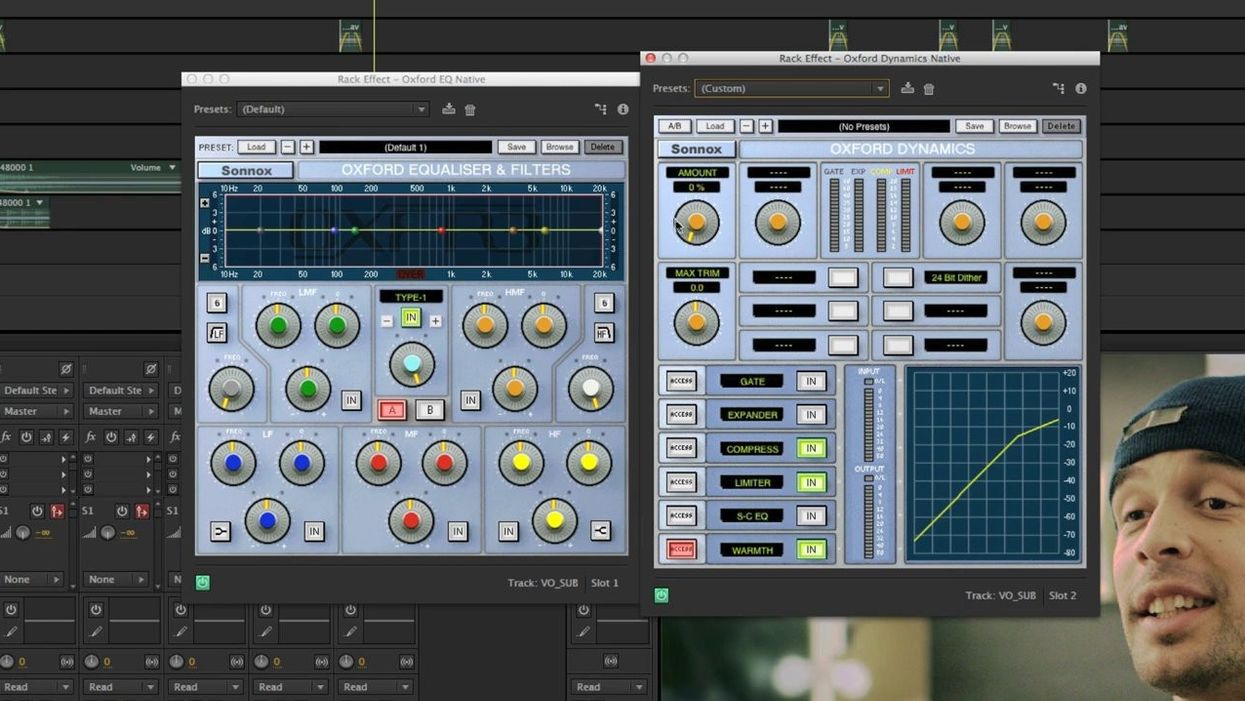Audio101: Learn About Submix Basics and the Power of the Bus

Just as digital imagery can be manipulated in post with a number of approaches -- combinations of which may be used to achieve pretty much the same effect -- working with audio is a malleable exercise. It's become even more malleable recently thanks to innovative sound manipulation interfaces which provide a powerful palette for painting, re-painting, and un-painting sound. That said, some tenets of the basic audio interface design haven't changed much in decades. One such basic is the submix. Check out a great demonstration of the undiminished usefulness -- and power -- of 'subs' below.
A submix is a pre-master bus, a group composed of select related individual audio signals from its own original respective track, which altogether may constitute a stem. This allows for such stems, clusters of associated signals -- such as a family of individual close-mic'd drum signals -- to then collectively be effected and mixed against the rest of the sounds, such as the other instruments of the band, as a single unit. After all, it'd be silly (and somewhat painstaking) to have to separately lower the levels of every single drum mic the exact same minute increment when all you want to do is make all the drums -- or the whole drum kit as a unit, better-put -- simply quieter than the guitar, or perhaps another submix of, say, 700 MIDI strings. Especially when those snare levels were already ever-so-perfectly balanced against the bass drum! Such is the advantage of the submix, the content of which is then finally ready to be sent to another bus, such as the master (where yet more stuff can happen to it, along with everything else, if you want) before it's output. This is demonstrated below.
This video comes to us from the blog FILM...SOUND...COLOR and its Vimeo channel, as a member of the blog's 'Audio101' series of demonstrations/tutorials.
I know I might be a special case -- and that I've said this countless times before -- but for a fifteen minute-long video, I found myself caught off-guard by the end and wishing there was even more material here. That may because I'm a wretchedly amateurish neophyte when it comes to the finer side of audio (at least by my own standards) and Mr. Micha Schmidt appears to be an incredibly (and multi-) skilled technician and artist, from which many could surely learn. It may also be because Mr. Schmidt has created some dense mixes from diverse material here -- for a short piece, some of this stuff is pretty damn dense -- which could easily lend itself to a real-time 9 hour-long tutorial which, yes, I would also gladly watch.
In the meantime, and in that very spirit, here's a quick roundup of other Audio101 videos from Schmidt's FILM...SOUND...COLOR blog:
And, as for the last video, via F/S/C's Vimeo description:
So this is a "Client Profile" of Alan Meyerson the main Music Scoring Mixer of Hans Zimmer & others Euphonix had on their website back in 2007 ... i found it on my hard drive the other they and since AVID bought Euphonix and does not have it on their side anymore i just thought i share it with you...
Two things he is my Hero ... his mixes sound awesome ... he knows what he is doing ... 1st because of his talent and 2nd because he actually uses some analogue gear in a fairly digital workflow .... that is actually a pretty good idea to keep in mind ...
Alan Meyerson on IMDB .... pretty awesome list: imdb.com/name/nm0583657/
And there isn't much more to say about that. Check it out:
Even though the availability (and desirability, unfortunately) of truly analog equipment will continue to decline, the desktop or laptop -- or even tablet or smart phone -- that you're reading this on is itself a home studio in its own right, and that's why I appreciate videos like these. Some things apply to software packages, as some of the nifty Premiere Pro-specific tips do above, but one thing audio folks can depend on is the submix, because that's not going away any time soon.
Links:














